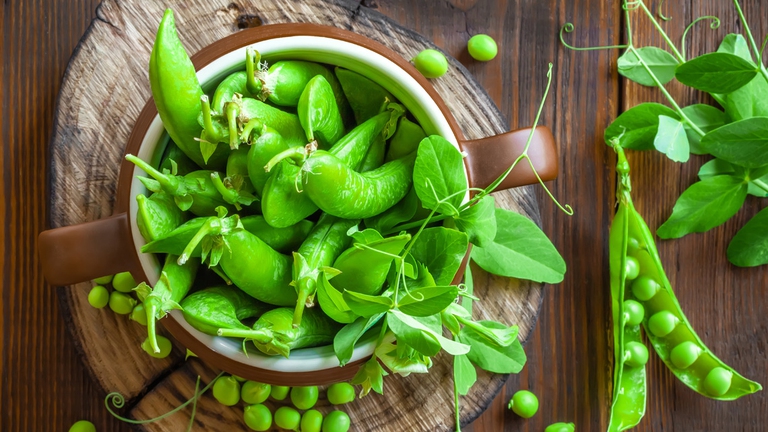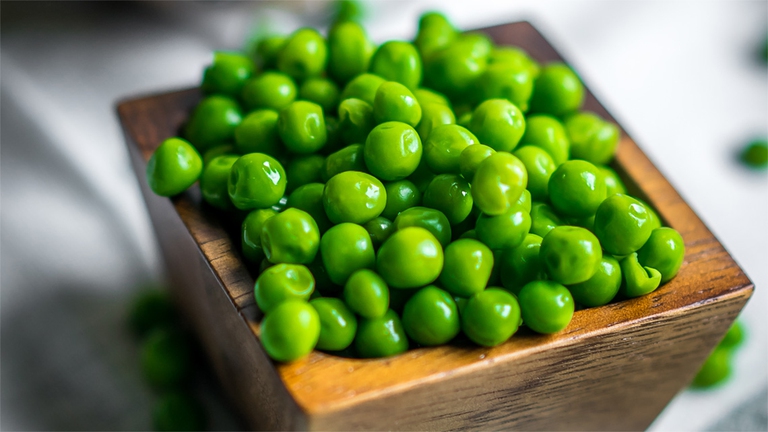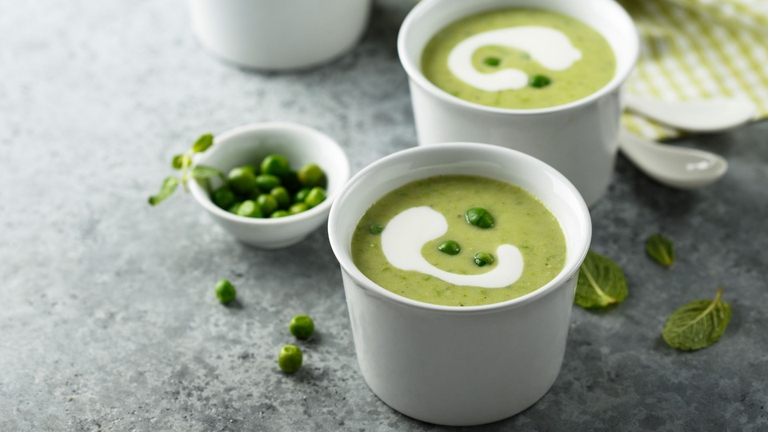https://www.lifegate.it/piselli
- |
First published on December 23, 2009
- Often confused with vegetables, peas are legumes with a sweet and delicate flavor grown already in prehistoric times.
- They provide a good nutritional intake and thanks to the presence of fiber they are detoxifying for the body.
- A good culinary pairing not only enhances its taste but also its properties.
Peas have been part of our diet since time immemorial, it is thought as far back as the Copper Age:they were grown for food use, especially to preserve them dry, as an important resource for the winter when fresh vegetables were scarce.Only in the Middle Ages did they begin to be appreciated fresh.Today peas are recognized as having very modern virtues, including environmental ones.

Characteristics of peas:legumes or vegetables
THE peas (Pisum sativum) derive from the Fabaceae or legume family, classifying themselves in the largest group of legumes.It is a key food of the Mediterranean diet, and has compositional aspects useful for staying healthy. Their versatility in the kitchen is not negligible and the fact that these vegetables also easily meet the tastes of children.
The pea plant can be more or less climbing and its flowers are white or delicious shades of pink or purple, depending on the species.It is cultivated for its own seeds spherical inside the pod (used for fodder), small and very green, of delicate flavour And Sweet.I am legumes, although often confused for vegetables.To recognize tender peas, break the pod and check the seeds inside:if they have a smooth, taut skin and come off easily, taking the peduncle with them, it means that they are truly fresh, also suitable for eating raw.Otherwise, use them for prolonged cooking.
Nutritional values
| Nutritious | Quantity per 100 grams |
|---|---|
| Energy | 81 kcal |
| Macronutrients | |
| Carbohydrates | 14.4g |
| – of which sugars | 5.67g |
| Proteins | 5.42g |
| Fats | 0.4g |
| – of which unsaturated | (mainly) |
| Fiber | 5.7g |
| Micronutrients | |
| Soccer | 25 mg |
| Potassium | 244 mg |
| Phosphorus | 108 mg |
| Magnesium | 33 mg |
| Iron | 1.47 mg |
| Zinc | 1.24 mg |
| Folates | 65 µg |
| Vitamin K | 24.8 µg |
| Vitamin C | 40 mg |
| Thiamine (B1) | 0.266 mg |
| Riboflavin (B2) | 0.132 mg |
| Niacin (B3) | 2.09 mg |
The characteristics of peas respond to different nutritional needs, defining a healthy food rich in components.A standard amount of 100 g of fresh peas provides an energy intake of 81 kcal.The composition in macronutrients corresponds to 14.4 g of carbohydrates (of which 5.67 g are simple sugars), 5.42 vegetable proteins of medium biological value and 0.4 g of lipids, mostly unsaturated.The fiber content is 5.7 g.As regards the intake of micronutrients, several are highlighted minerals, such as calcium (25 mg), potassium (244 mg), phosphorus (108 mg), magnesium (33 mg), iron (1.47 mg) and zinc (1.24 mg).
Among them vitamins we find folates (65 µg) and other B vitamins (such as thiamine, riboflavin and niacin), but also vitamin K (24.8 µg) and vitamin C (40 mg).

Properties of peas
The nutritional composition of peas has repercussions on their health effects, as happens with the co-presence of some bioactive substances.Containing insoluble fiber, peas are a useful food to combat constipation, favoring intestinal transit.But there is no shortage of soluble fibre, which is active in reduce glucose absorption and, together with phytosterols, dietary cholesterol.The peas present a moderate glycemic index, and are therefore adaptable to the diet of the diabetic patient.
Containing potassium in good quantities, they are suitable for blood pressure control, making it suitable for hypertensive subjects.Rich in folate, these legumes are an excellent food to consume pregnancy.The intake of folic acid, in particular, is essential for the correct development of the fetal nervous system.Together with the vitamin C, this food also provides some carotenoids, making them useful as an antioxidant.Overall, peas boast some digestibility and are gluten-free, falling among the food options for celiacs and gluten intolerants.Containing medium biological value proteins, peas and legumes in general are prominent foods for those who choose to limit animal protein sources.
Several studies attribute interest to legumes, and therefore also to peas anti-tumor potential, thanks to the relative contribution of phytocomponents.Among these, we find phenolic compounds, but also saponins and lectins.
A cultivation that enriches the soil with nitrogen
According to some recent research it is one of the agricultural products more convenient from an ecological point of view, because they make the use of fertilizers unnecessary.Legumes, in fact, have the ability to attract and protect bacteria that they fix nitrogen, a substance without which plants cannot grow, “making them the third largest family of plants on the planet” says Joel Sachs, professor of evolution and ecology at the University of California Riverside.
Growers could alternate legume seasons with other crops, leaving the soil full of nitrogen-fixing bacteria and thus avoiding the need to use fertilizers.
Joel Sachs
How they are eaten
However, the ideal is to consume them fresh, mainly in the months of May and June, with maximum availability of all the properties that make them nutritious and tasty.Frozen peas, picked when fully ripe, have practically the same nutritional values as fresh ones.On the contrary, canned (pre-cooked) ones have a lot of sodium, fewer vitamins and are more caloric due to the presence of sugar.Dried peas are also higher in calories.They are ideal for a restorative diet, thanks to the presence of proteins.
How many peas to consume
The guidelines for healthy eating suggest consuming legumes three times a week.For dried legumes, a standard portion of 50 g is indicated, equal to 3-4 medium spoons, while for fresh, frozen or canned legumes, the recommended portion is approximately 150 g.These indications also apply to peas, which is possible alternate or combine with other legumes.
How to use peas in cooking
Fresh, frozen or dried, although less "practical", peas are suitable for various recipes.The more classic ones combine these legumes with pasta, either using them as they are or in the form of a velouté sauce.An interesting aspect concerns the amino acid “completeness”..
Legumes, like peas, contain proteins of medium biological value as they are poor in some amino acids (cysteine and methionine).
Grains, on the other hand, are deficient in the amino acid lysine.Combining these two foods, essentially, completes the supply of essential amino acids.This principle is applied to vegetarian and vegan nutrition, with the aim of making up for the reduced or absent intake of animal proteins.Green light, therefore, for vegetable meatballs and burgers made with peas and breadcrumbs, with the addition of vegetables, potatoes or quinoa, but also other legumes, herbs and spices of various types.The versions that use eggs or fresh or mature cheeses are also tasty.Most often, peas are used as a side dish of vegetables, alongside meat or fish dishes.This is not exactly an "orthodox" choice, considering the substantial diversity between legumes and vegetables, and taking into account the overall nutritional intake.The food groups in question are, in fact, quite different.Vegetables are poor in macronutrients (carbohydrates, proteins, fats), while they are rich in water, fiber and mineral salts.These characteristics have repercussions on the relative caloric intake, which tends to be very low.

Peas, and legumes in general, are instead rich in carbohydrates and proteins, providing even more kcal.Vegetables are therefore the ideal side dish for sources of macronutrients, providing very useful substances and completing the dish.Peas, on the other hand, constitute themselves an important source of carbohydrates and proteins, and using them as a side dish only makes the meal heavier.
Recipe ideas with peas
The recipes with peas are numerous, and infinite possible combinations:from flans to soups, from stews to fillings, peas flavor regional recipe books throughout Italy.In spring, when you can find them very fresh, we recommend cooking them as soon as they are shelled from their pods, to fully savor all their goodness.You will only be able to store them in the fridge for a few days and we recommend shelling them only when using them, as the pod helps conserve their humidity.If you haven't found fresh peas, try them to take advantage of the same characteristics frozen.
Otherwise you can always opt for peas dried (from organic farming):they have a very long shelf life, but will need to be soaked for about 2-3 hours and then cooked for 40-50 minutes.In short, far beyond the usual can, in fresh, frozen or dried peas there is a world of imagination for classic and creative recipes.
Contraindications
Generally speaking, peas are a healthy and wholesome food.In some cases, however, it is preferable to reduce or exclude its consumption, in order to avoid unpleasant adverse effects.
Not being deprived of Fodmaps (a term that stands for "fermentable oligosaccharides, disaccharides, monosaccharides and polyols"), peas are among the foods to be consumed in moderation in case of irritable bowel syndrome, and separately from other sources of these components.Sensitivity, in any case, tends to be subjective, therefore It is important to test foods, both qualitatively and quantitatively.Their consumption may also be contraindicated for allergy sufferers.It is important, among other things, to evaluate any cross allergies.In case of clear sensitivity, it is preferable to exclude this food.Among other things, peas provide oxalates, which are implicated in the formation of kidney stones.Individuals predisposed to this problem, therefore, should consume foods containing these substances in moderation.The same goes for subjects with hyperuricemia or gout, since peas they provide purines.
FAQs
- What is eating peas good for?They help combat constipation and keep glucose and cholesterol levels under control.Furthermore, they provide folic acid, useful in pregnancy, and are indicated for the management of hypertension.Overall, it is an antioxidant food, also endowed with anti-tumor properties.
- How often can you eat peas?According to the guidelines for healthy eating, it is advisable to consume legumes three times a week, in standard portions of 50 g for dried ones, and 150 g for fresh, frozen or canned peas.
- When not to eat peas?At the same time as irritable bowel syndrome, peas should be consumed in moderation, evaluating their subjective tolerability threshold.It is preferable to reduce the quantity and frequency of consumption even if you are predisposed to kidney stones, as well as in case of hyperuricemia or gout.Their consumption should be avoided in case of full-blown allergies.
- Can those suffering from irritable bowel syndrome eat peas?Peas are not free of Fodmaps and tolerability is subjective, so it is good practice to test the quantities consumed.
- What can be paired with peas?For protein intake, it is advisable to combine them with cereals.Since they are legumes and not vegetables, peas are not really suitable as a side dish for protein foods.
